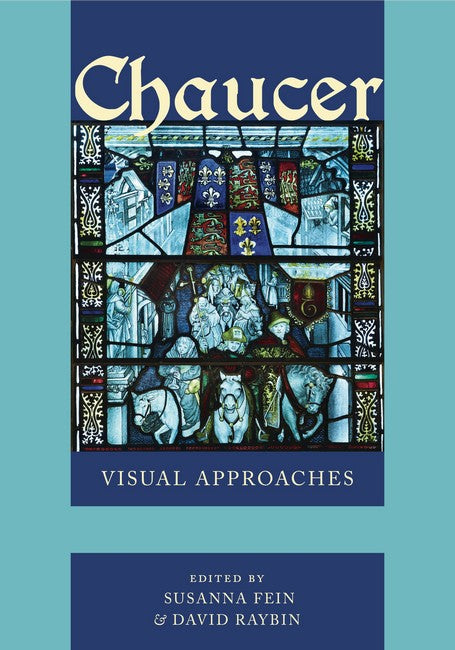Contents
List of Illustrations
Preface . Chaucer: Visual Approaches / Susanna Fein and David Raybin
Acknowledgments
I. WAYS OF SEEING
1 Intervisual Texts, Intertextual Images: Chaucer and the Luttrell Psalter / Ashby Kinch
2 Creative Memory and Visual Image in Chaucer’s House of Fame / Alexandra Cook
3 “Quy la?”: The Counting-House, the Shipman’s Tale, and Architectural Interiors / Sarah
Stanbury
4 The Vernon Paternoster Diagram, Medieval Graphic Design, and the Parson’s Tale /
Kathryn Vulić
II. CHAUCERIAN IMAGESCAPES
5 Standing under the Cross in the Pardoner’s and Shipman’s Tales / Susanna Fein
6 Disfigured Drunkenness in Chaucer, Deschamps, and Medieval Visual Culture / Laura Kendrick
7 The Franklin’s Tale and the Sister Arts / Jessica Brantley
8 Miracle Windows and the Pilgrimage to Canterbury / David Raybin
III. CHAUCER ILLUSTRATED
9 Translating Iconography: Gower, Pearl, Chaucer, and the Rose / Joyce Coleman
10 “Qui bien ayme a tarde oblie”: Lemmata and Lists in the Parliament of Fowls /
Martha Rust
11 The Visual Semantics of Ellesmere: Gold, Artifice, and Audience / Maidie Hilmo
12 Drawing Out a Tale: Elizabeth Frink’s Etchings Illustrating Chaucer’s “Canterbury
Tales” / Carolyn P. Collette
Notes
Bibliography
Editors and Contributors
Index of Manuscripts
General Index

